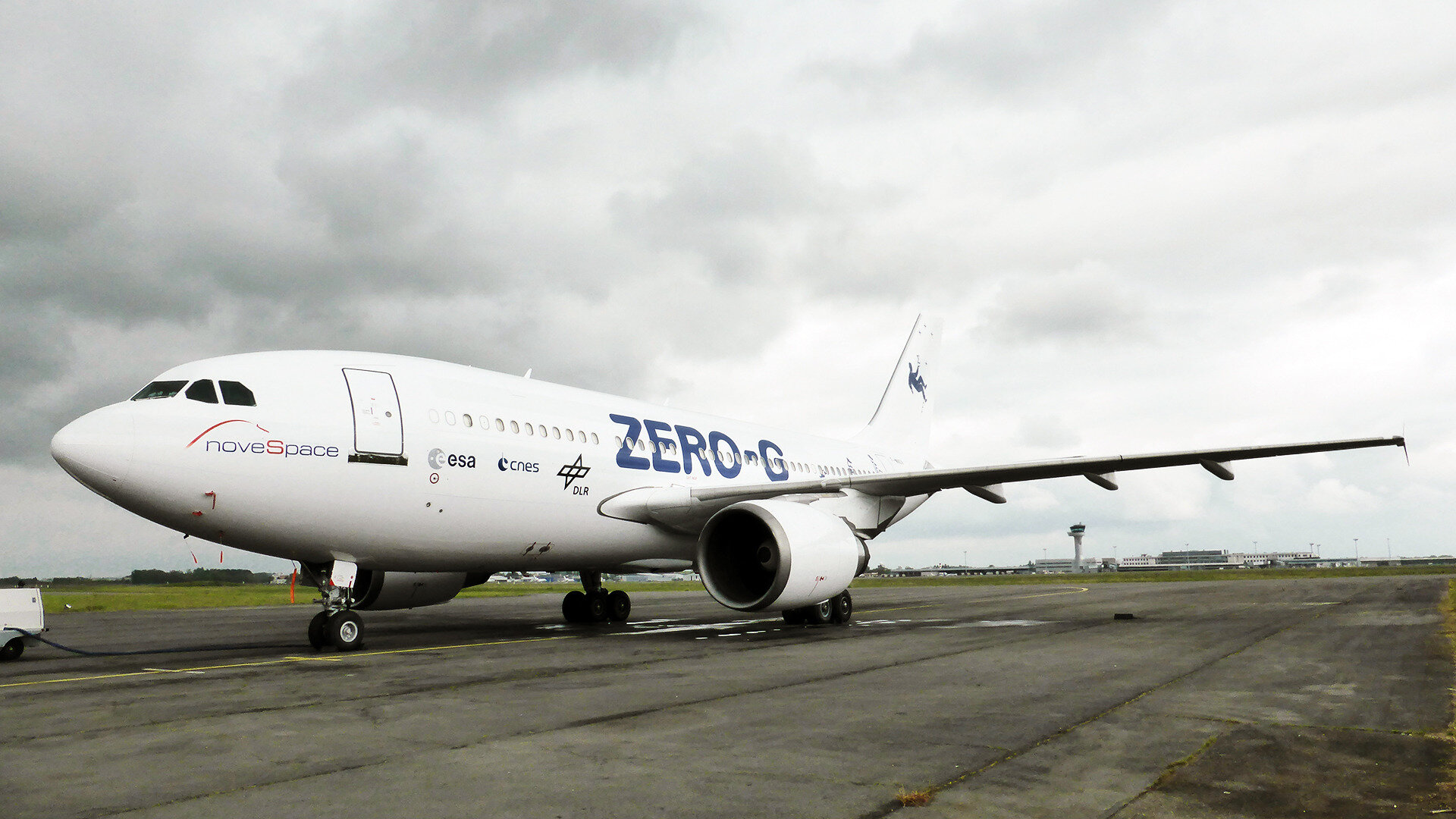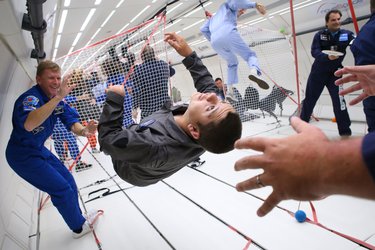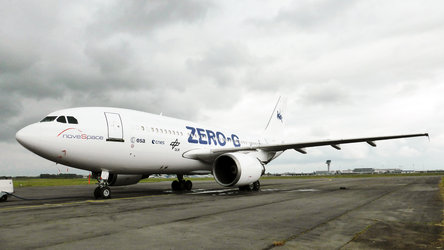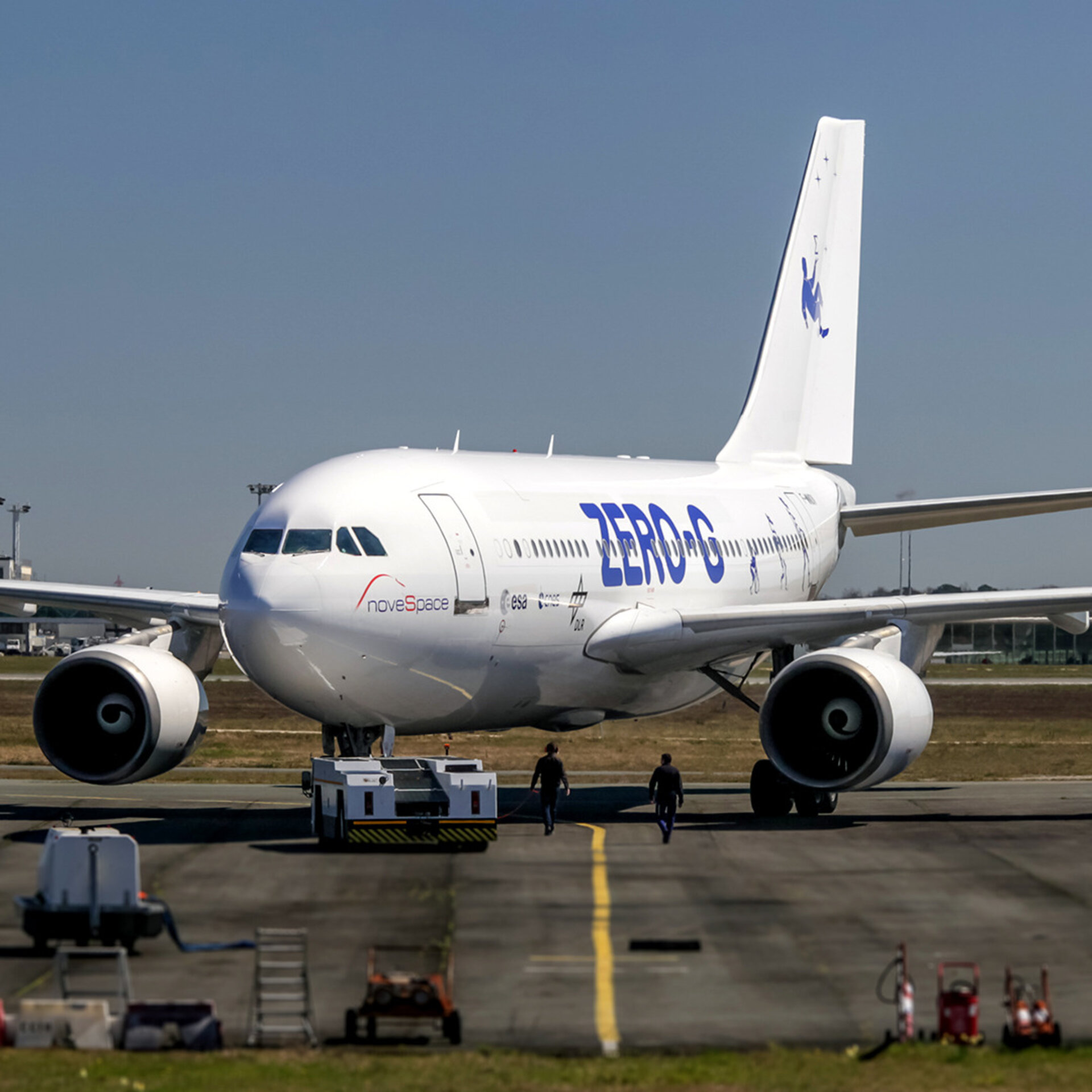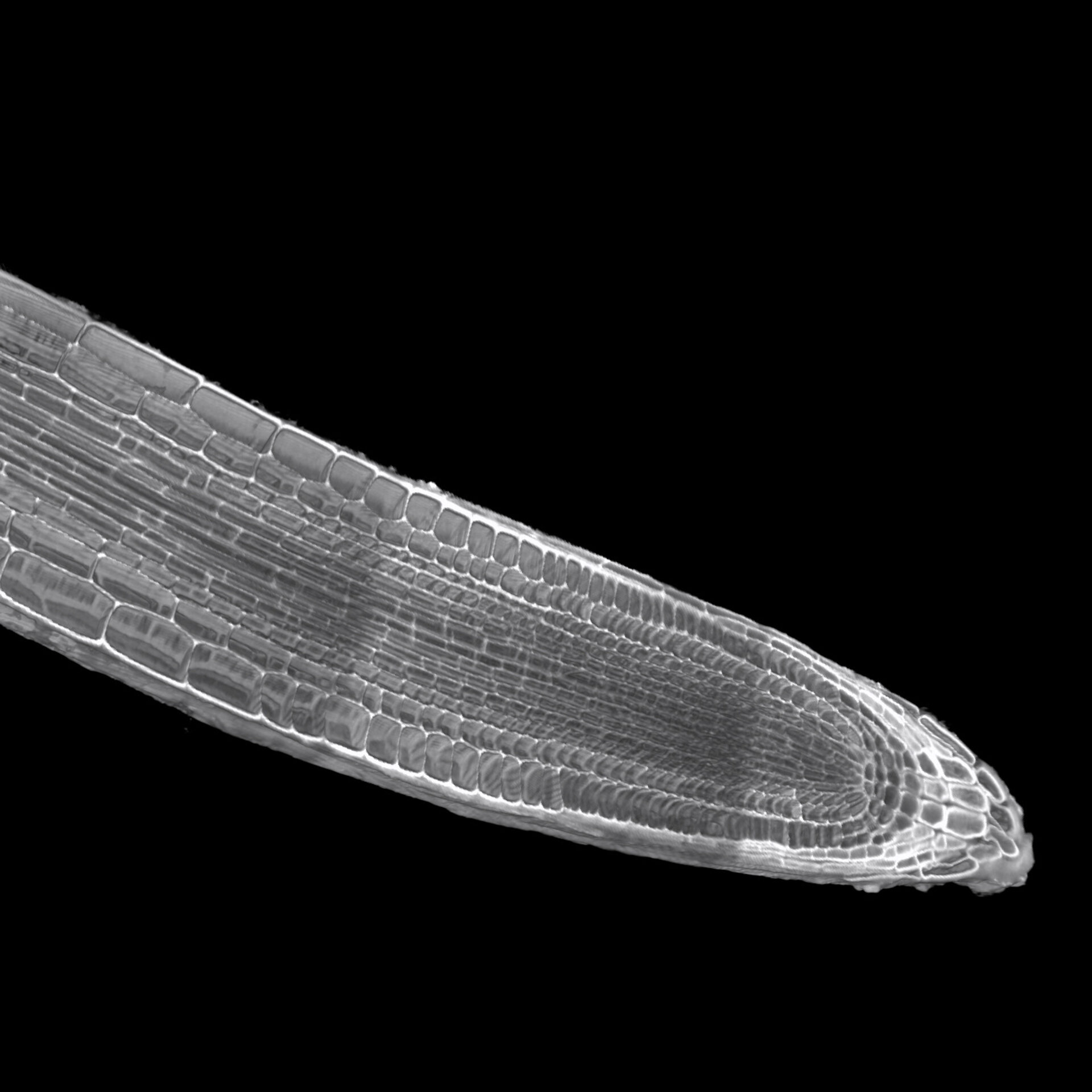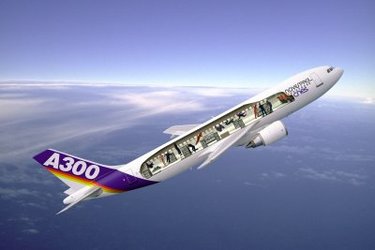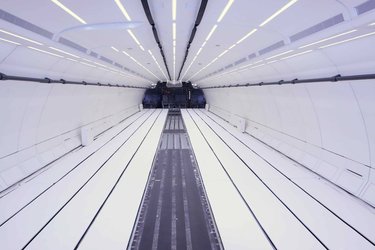Airbus A310 Zero-G
The main characteristics and features of the Airbus A310 Zero-G aircraft are:
- The aircraft is a two-engine modified Airbus A310 “Zero-G” aircraft.
- It is based at the Aéroport International de Bordeaux–Mérignac.
- Aircraft maximum mass:157 tonnes.
- Overall length: 46.4 metres.
- Wingspan: 43.9 metres.
- Fuselage diameter: 5.6 metres.
- Total cabin volume: 300 m3.
- Dimensions of testing volume inside cabin: 20 x 5 x 2.3 metres (L x W x H).
- Total testing volume: 230 m3.
- The cabin walls, floor and ceiling are specially padded.
- The interior is continuously illuminated by led lights.
- The aircraft can accommodate 40 passengers.
- There are four passenger doors.
- The door for equipment loading has a height limit of 1.80 metres and a width limit of 1.06 metres. For experiments larger than this, the equipment must be designed to be taken apart.
Parabolic flight
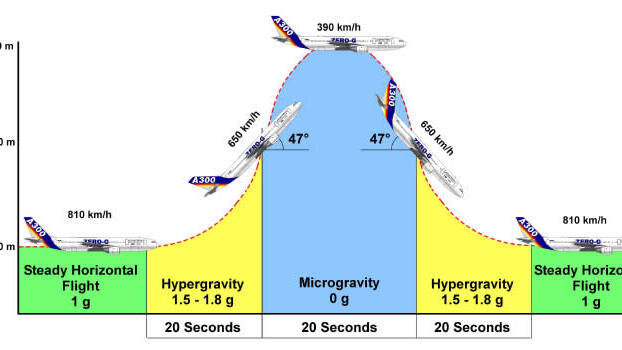
The Airbus A310 Zero-G aircraft generally executes 31 parabolic manoeuvres during flight.
From a steady horizontal flight, the aircraft gradually pulls up and starts climbing to an angle of approximately 50 degrees. This pull-up phase lasts for about 20 seconds, during which the aircraft experiences an acceleration of around 1.8 times the gravity level at the surface of the Earth. The engine thrust is then strongly reduced to the minimum required to compensate for air-drag, and the aircraft then follows a free-fall trajectory forming a parabola lasting approximately 20 seconds, during which weightlessness occurs.
For reduced gravity parabolas the pull-up phase is reduced to a lower angle and the engine thrust is reduced to a point where the remaining vertical acceleration in the cabin is approximately 0.16 g for approximately 23 seconds or 0.38 g for approximately 30 seconds.
At the end of this period, the aircraft pulls out of the parabolic arc giving rise to another 20 second period of 1.8 g to return to normal level flight attitude.
These manoeuvres are flown repeatedly, and the whole cycle lasts three minutes: a one-minute parabolic phase (20 seconds at 1.8 g followed by 20 seconds of weightlessness followed by 20 seconds at 1.8 g), followed approximately by a two-minute rest period at normal gravity. After every group of five parabolas a longer, eight-minute rest period is done.
Throughout the flight all personnel are kept informed of the flight status such as indication of how many seconds to the next parabola, number of minutes for a rest period and so on.
At the end of this period, the aircraft must pull out of the parabolic arc, a manoeuvre which gives rise to another 20 second period of 1.8g on the aircraft, after which it returns to normal level flight attitude.
These manoeuvres are flown repeatedly, with a period of 3 minutes between the start of two consecutive parabolas, i.e. approximately a one-minute parabolic phase (20 seconds at 1.8g + 20 seconds of weightlessness + 20 seconds at 1.8g), followed approximately by a two-minute "rest" period at 1g. After every group of five parabolas however, the rest interval is increased from 5 to 8 minutes.
Throughout the flight, all personnel are kept continuously informed of the flight status, i.e. indication of how many seconds to the next parabola, number of minutes of rest period, etc.


